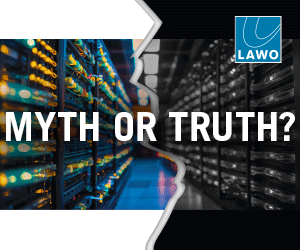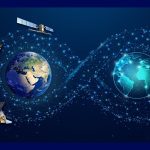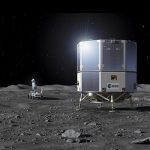Viasat to lead the lunar orbiting satellite communications portion of ESA's Moonlight Programme, alongside Telespazio and a host of other European and UK companies.

Viasat has joined the European Space Agencys (ESA) Moonlight project, partnering with programme lead Telespazio to develop a cutting-edge navigation and communication system for lunar exploration.
The Moonlight initiative aims to establish a lunar orbiting network that will enhance communication and navigation services for missions operating both on the Moon’s surface and in lunar orbit. This system will function as a data highway, facilitating seamless and efficient communication between astronauts, spacecraft and lunar vehicles, ultimately accelerating scientific research and exploration. Additionally, it is expected to pave the way for commercial activities such as space tourism and lunar resource utilisation.
Viasat will play a key role in designing and developing the communication network, leading the definition of end-to-end communication services for lunar landers, rovers and orbiters. The company will also manage the Earth-based ground infrastructure and user terminals on the lunar surface. As the project lead, Telespazio has signed a contract with Viasat for the initial design phase, which is fully funded by ESA during Phase 1.
The UK Space Agency, a major contributor to the Moonlight project, has selected Viasat to lead the UKs efforts in delivering the communication capability. The first phase of Moonlight services is set to launch by 2028, with full operational deployment expected by 2030.
Mark Dankberg, Chairman and CEO, Viasat, said: Moonlight is among the most forward-looking and exciting projects undertaken by the European Space Agency and the UK Space Agency. Viasats participation builds on our heritage of delivering and operating highly innovative and ambitious satellite communication programs. Alongside Telespazio, we look forward to supporting the Space Agencies by leveraging our commercial orientation, network engineering and operational skills, to reliably and securely support future generations of space exploration.
Gabriele Pieralli, CEO, Telespazio, added: This marks a pivotal milestone in our commitment to the Moonlight program. By partnering with a global leader in satellite communications, we can harness cutting-edge technologies to create a secure and efficient communications and navigation infrastructure essential for the success of lunar missions. This collaboration reinforces our drive to innovate and deliver comprehensive solutions, paving the way for a new era in lunar exploration and resource utilisation.
Laurent Jaffart, ESAs Director of Connectivity and Secure Communications, stated: “Moonlight is a game-changer for lunar exploration. By providing reliable communications and navigation as a service, we’re enabling future missions to dedicate more of their payload capacity to mission-critical instruments. This interoperable infrastructure will significantly enhance mission capabilities while reducing complexity and cost, ultimately accelerating humanity’s return to the Moon.”
Craig Brown, Investment Director at The UK Space Agency, commented: The Moonlight initiative will showcase Viasats and the UKs leadership in emerging commercial markets such as the lunar economy. Once developed, the service will not only advance our capabilities across satellite communications but also provide reliable navigation and communication services to the growing number of commercial and institutional missions to the lunar surface over the next decade.
Viasat is a crucial addition to the Moonlight partnership, and the new lunar economy, driving innovation and creating high-skilled jobs across the country.
Giancarlo Varacalli, Head of Telecommunications and Navigation at the Italian Space Agency (ASI), noted: Moonlight is steadily taking shape, and the inclusion of Viasat marks a significant milestone towards the provision of communications and navigation services for future ambitious lunar missions. Italy is proudly at the forefront of this endeavour, with ASI strong support and through its leading industrial excellence, aiming at playing a major role in a sustainable presence on the Moon.










































































